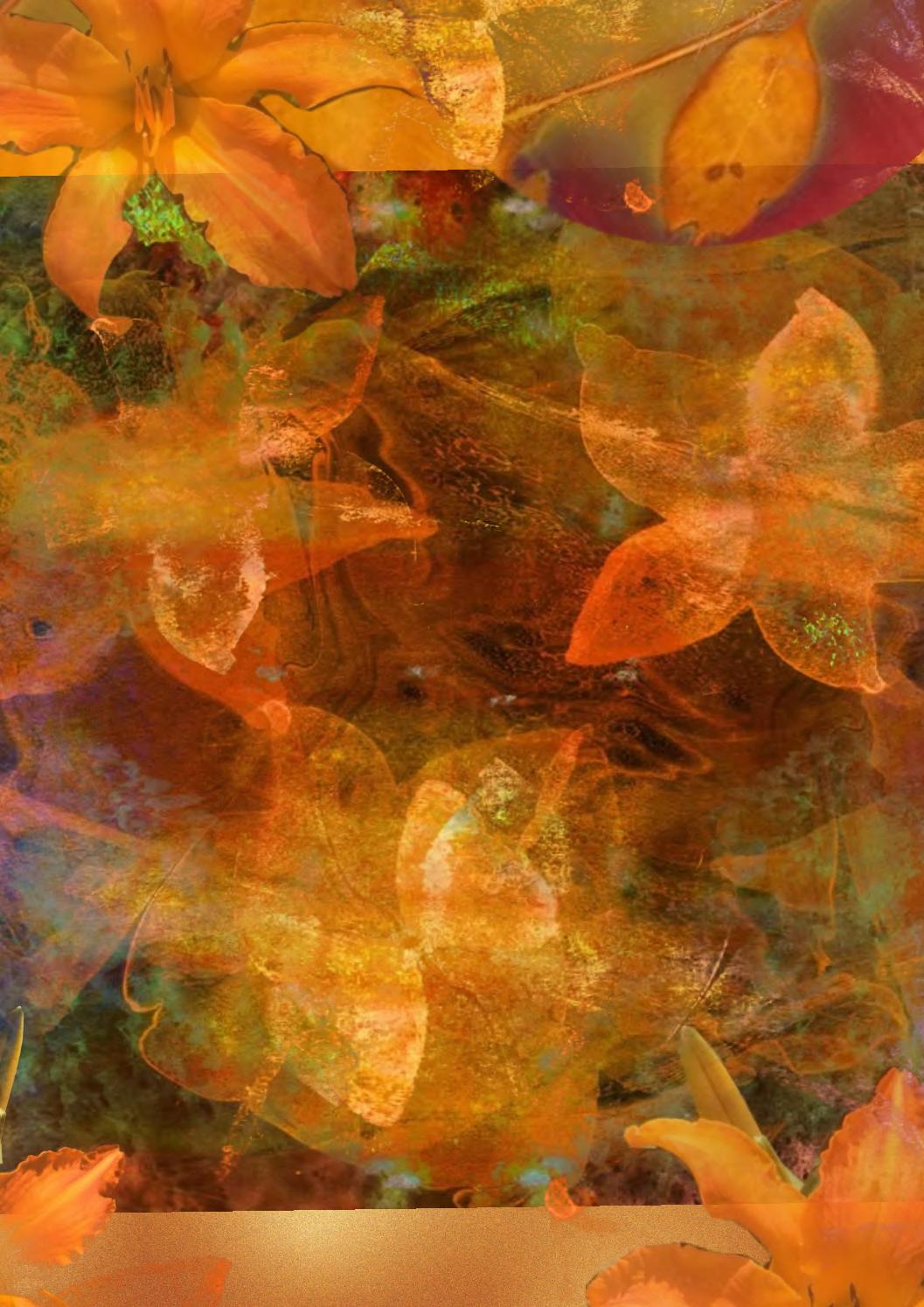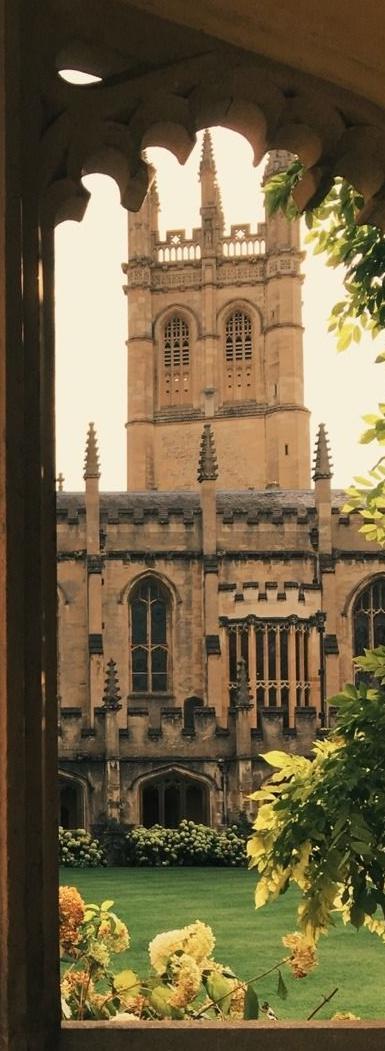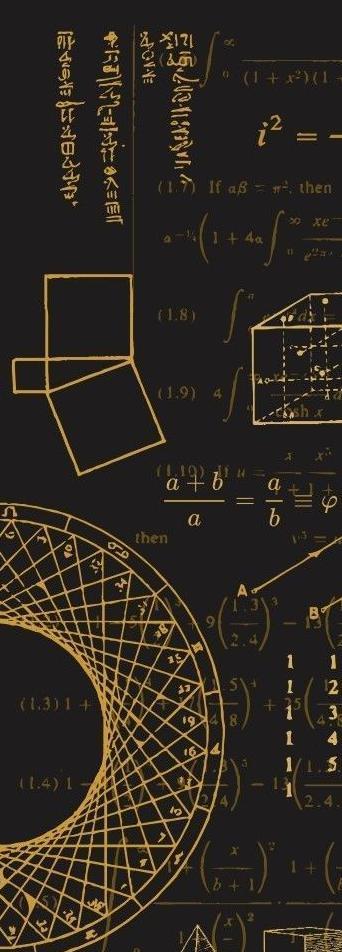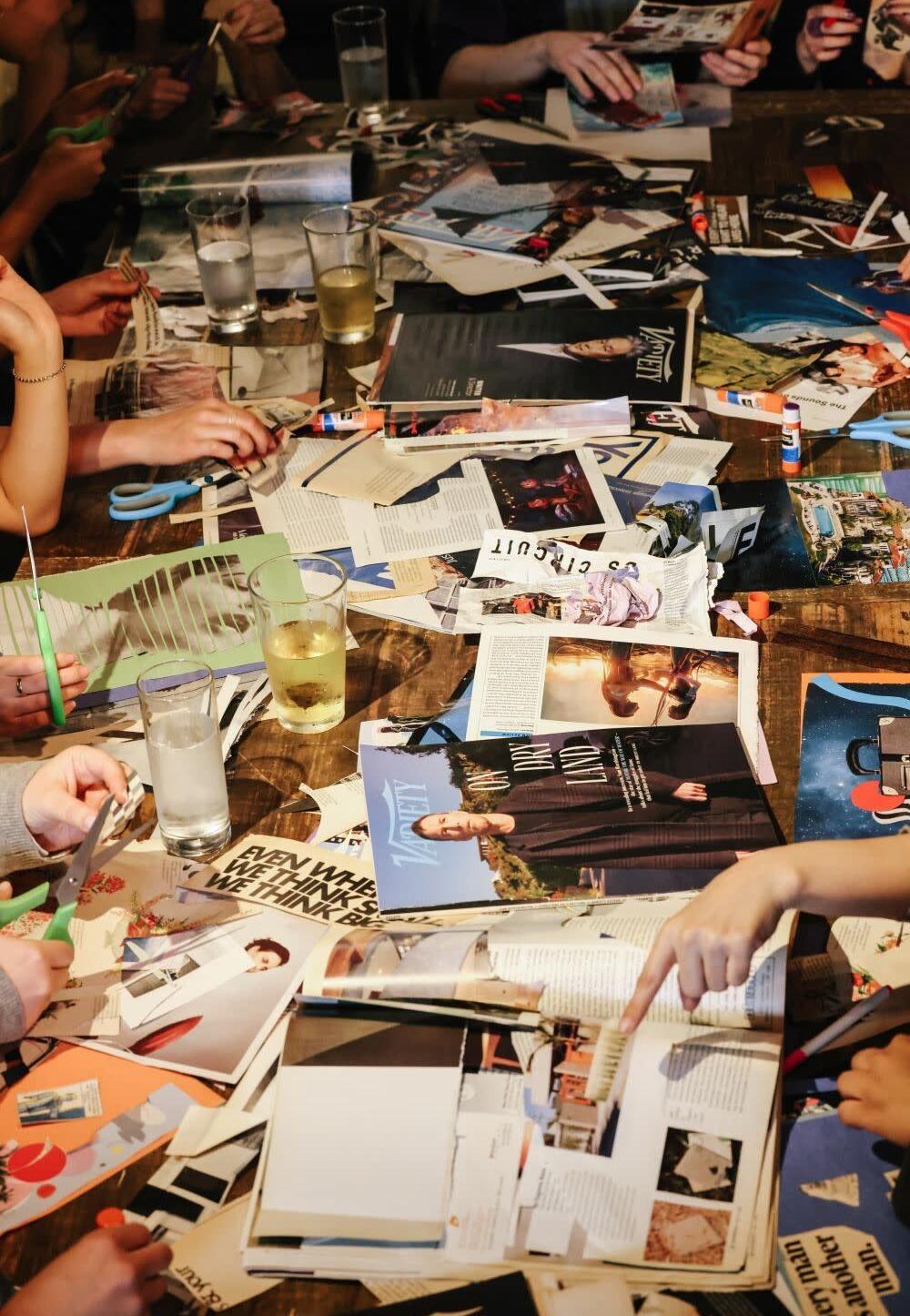
time time time




time time time




I have one and only one dream when it comes to The Trojan Voice.
To create a legacy. A tradition.
With TISB’s rich culture spanning over two decades, it surprised me that we were yet to create a tangible monument for all that our institution had to offer. Not just infrastructure and opportunity-wise, but also in the sheer promise of our student body.
Every single member of our vast community has a voice and a story to tell, and those stories deserve to be remembered. With The Trojan Voice, we hope to provide a platform for everyone who wants to be heard, and let those words form TISB’s legacy.
And so I present to you our first issue: The Changing Leaves. A product of three months of dedication, effort and triumph, we hope you love these pieces as much as we loved making them. It is truly an honour to create this project with so many brilliant people, and it is only the first step to a long journey.
Thank you for taking the time to see where it all starts. We hope you enjoy.
Vedika Sengupta


The Summer of Bad Decisions - And Why We’re Obsessed
The VIVUM Madness From the Inside Out
Ganesh Day: Celebrating Wisdom, Joy, and New Beginnings
VIVUM Through The Eyes of a First Timer
Uni Tips, Cambridge Bashing, and Dreadful Moustaches: An Interview with The Oxford Interns
More Than Just a Game: The Spirit of Indian Cricket
Swords, Sonnets & Situationships: Literature Through the Ages
The Future Has Arrived: A Docket of Recent Scientific Discoveries
Checkmate in Paradise: The 2025 FIDE
Chess World Cup

The Summer I Turned Pretty, a popular trilogy turned television series by Jenny Han, draws readers into a sunlit seaside world where an intricate story is woven every summer, a chaotic mix of nostalgia and adolescent adrenaline – the best thing to unwind and laugh to on a Sunday night, because, let’s be honest – what’s better than the messiest of storylines and the most ridiculous of dramas to prepare you for another school week.
Through Belly’s perspective, the show explores a teenage girl’s changes, emotional and physical (and clearly sanity-wise), while discovering and living through teenagehood. It makes us laugh, cry and positively rage as we see Belly make all the wrong choices, all the time. But it’s no surprise that deep down the show resonates with the audience, especially our generation. Maybe it’s because at some point during this ugly yet powerful turning curve in life, we realize that we often make mistakes that hurt both ourselves and the people around us. Even though our minds and bodies convince us that they are the best solutions.
But isn’t there a magic in that? That enthralling part of life, where everything that seemed to be ‘under control’ becomes a nerve-wrecking, chaotic mess?
Isn’t that... it? It’s the exact reason why this messy beachside drama has the world flocking to their screens, anticipating its usual introductory chimes and ocean backdrop with every episode.
The ball of nerves that eat away at our souls as the drama unfolds feels all too familiar with what we often see at school, and that’s what makes us talk about it even more.
Here is what Kaashvi Somani, a 9 grade student, has to say about the show: th
“I am Team Conrad, obviously.” She exclaims (obviously). “But that doesn’t mean I’m anti-Jeremiah. Many of the things he did throughout the show were definitely wrong but we have to recognise that he is only human. The entire point of the show is that everyone goes through their own issues, makes their own mistakes, and ultimately grows from them.” Kashvi also states “I’m glad Belly chose to go to Paris. The commercialised portrayal that love should outshine your dreams is completely ridiculous, and I’m glad Jenny Han highlighted that.” And this is a thought that all of us can support her on.
Like it is with many heroines in famous movies and shows, a love that is beautiful and enigmatic often seems to appear more valuable than a lifetime of effort for a dream that makes them whole.

cknowledge that the heart is ays dreams that sculpt our eam that completes us, that And that dream is only achievable with effort, with the drive that overwhelms even the desire. Unlike Belly, who for many years didn’t know who she was without the Fisher brothers, losing herself to reveries, our feet should be rooted in the ground even as our hopes reach the clouds.
So, while ‘The Summer I Turned Pretty’ seems at the surface like a borderline crazy series, it has a lot to teach when you look through the cheesy dialogues and infuriating mistakes. Because, through those mistakes, realization, an ugly but necessary reality check, dawns upon us, and that is how we grow to grasp what has always felt out of reach.
Vedika Sengupta
I’m going to be honest, this whole “passage of time” thing is surreal. It feels like a month ago I was fighting for my life in the trenches of IGCSE, and yet somehow it’s already been over three months since VIVUM. How did that happen? And then, if we zoom out even further, are we sure it wasn’t last year that I only just attended my first VIVUM? Fast-forward to now and you’ll see me leading registrations, surrounded by friends, no more than thirty feet from where I sat alone 3 years ago.
VIVUM tends to do that, I guess. Remind you of years past, while forcing you to think of the years to come. Throughout the two days I managed to catch at least six ideas for upcoming mascots, one a little more often than others (the year of the Mosquito, here we come).
Whether it’s the collective whining about bad weather, or the shouting of lyrics at Socials, there’s something to the tradition that brings every TISB student together, regardless of grade or house. We’re no longer Voyagers, Pioneers, Explorers or Discoverers. We’re Trojans. Though that’s a little hard to remember when you see your fellow classmate cutting the coupon line that you’ve been standing in for fifteen minutes.
Thankfully, this year was the first time I was on the other side of the table, and I have never respected the VIVUM organizing committee more. Hours passed like seconds as the never-ending barrage of students from across Bangalore, brimming with energy and eagerness to participate in the ample events VIVUM provides, flooded the gates of TISB.
“Cultural registrations here!” is a phrase I will forever be reciting in my sleep. “Register, ID, Stamp, next! Register, IDactually, even a school group chat works, anything to prove you’re a student- NEXT!”
It was, in every definition of the word, chaos. The experience has weaved itself into an unforgettable adventure amongst my friends, and not a day goes by where we don’t recollect and laugh about the experience - all the confiscated food items, makeup and that one student who decided to spray himself with his entire perfume bottle after hearing that it wasn’t going in.
Volunteering for VIVUM gave us not only great stories, but an indispensable peak into the pitfalls of organizing an event of such prestige and scale. All the technical glitches and logistical hitches gave us firsthand experience with crisis management, while also teaching us the dos and don’ts for the future. Many lessons were learnt, much fun was had, and here’s to an even better one next year!

Ganesh Day, also called Ganesh Chaturthi, is one of the most loved festivals in India. It celebrates the birth of Lord Ganesha, the elephant-headed god known for bringing wisdom, removing obstacles, and spreading happiness.
Many people also keep a fast, eat simple food, and avoid onion and garlic during the festival. How is it usually celebrated?
Families bring home clay idols of Lord Ganesha and decorate their houses with flowers, lights, and rangolis. Every day, they perform pujas (prayers), sing aartis, and offer sweets, especially modaks, which are Ganesha’s favorite!
On the last day, people say goodbye to Ganesha by immersing his idol in holy water. This ritual is called Ganesh Visarjan, and it reminds us that everything in life is temporary, but the blessings stay forever. Devotees chant “Ganpati Bappa Morya, Pudhchya Varshi Lavkar Ya!” , which means “Come back soon next year, Lord Ganesha!”
When is it Celebrated?
In 2025, Ganesh Chaturthi was celebrated on Wednesday, August 27. The festival lasted for 10 days, ending with Ganesh Visarjan on Saturday, September 6.
Fun Fact: Why Can’t We Look at the Moon on Ganesh Chaturti?
One night, Lord Ganesha was returning home after a feast, riding his mouse. Due to his round belly and the mouse’s small size, he stumbled and fell. The Moon (Chandra) saw this and laughed mockingly at Ganesha’s appearance. Offended, Ganesha cursed the Moon, declaring that anyone who looked at it on Ganesh Chaturthi would be falsely accused, a curse known as Mithya Dosha.


VIVUM was nothing short of sensational! From students giving their all in sports and cultural events to others racing back to their classes at 12:31 with their mouths full of food, there was something for everyone to enjoy. It was a time of laughter, friendship and discovery- an opportunity to meet new people, take risks, and maybe even stumble upon a brand-new hobby.
During VIVUM, many sports took place on the campus throughout the two days. For girls and boys there was football, basketball, hockey, table tennis, badminton, volleyball, tennis and athletics. The sports events were filled with determination and energy, as students from different schools gave their best on the courts and fields. Each match highlighted the importance of decorum and sportsmanship, as players encouraged each other and celebrated every victory together.
While the sports kept everyone's adrenaline rushing, the cultural events brought creativity, color and celebration to VIVUM. The music performances filled the air with rhythm and melody, while the dance performances dazzled the audience with their energy and expression.
From fashion shows to quizzes, every cultural event was a way for students to shine in their own way.
These moments came together in an environment where creativity thrived, passions shone brightly, and unforgettable memories were created.
Starting middle school can be a big change, but for many 6th graders, like me, it’s been an exciting new chapter. One of the highlights of the experience so far has been getting to visit VIVUM during our break times. Whether it's grabbing a quick snack, relaxing with friends, or just soaking in the lively atmosphere, VIVUM has become a favorite spot for many students.
VIVUM was more than just an event- it was a celebration of energy and togetherness. From the roars of the crowd during sports matches to the sparkle on the stage, every moment brought the students together, and left memories that will be cherished for the years to come.

Mithran Balachandran
“Oxford is Better”, was the immediate response to the question I asked, both of them in instant and strong agreement. Both the scholarly man and lively woman agreed: Cambridge can shove it (“Shoe the tabs!” she said, a common chant against the cantankerous Cantabridgians at sports tournaments).
This was one of the last interactions I had with one Sebastian and Ruby, a precocious twosome from across the pond, both with quite a strong dislike of City Market, the ultimate cacophonous street market, at 5:00 am, where they got their phones stolen. Needless to say, Bangalore has been a rollercoaster for them, an experience they wished to relate.


Despite the “Very dreadful” City Market incident they concurred, they have had a lovely time in Bangalore, going to the Botanical Gardens with its monkeys, satisfying Ruby’s peculiar simian fascinations, and like other Bangaloreans, the scrumptious delights of MTR, perhaps a bit more flavorful than English food.
TISB is also high on their list, where Sebastian remarked that he loved the cafeteria and its food (I didn’t inform him he could be honest yet), and both do love their tennis.
“Sebastian normally wins”, Ruby remarked disappointedly, as he chuckled in the background.
Quite contrary to what our teachers may say, apparently, we’re way nicer in school, and our roads are a “chaotic mess”, which, while brutal, is not at all wrong.
It wasn’t all travel catchups though; they gave a golden piece of college advice I found truly inspiring: Don’t.
Jokes apart, both of them strongly emphasized quality over quantity for college apps, both echoing the sentiment of not doing things for the sake of them, and also commented on how go-with-the-flow their applications were.
However, they both strongly disagreed with each other about the superior college, Sebastian arguing heatedly for Hartford, and Ruby defending her beloved St Anne’s. I do confess I rather felt a bit sidelined. They were unable to come to any conclusion, minus the fact that the Wetherspoon’s in Hartford always smelled like vomit, despite its lovely hot drinks, and that cafés are a mood. Both gushed about the cozy cafes in Oxford Town, like the Hartford College Café ( “Way better than St Anne’s” Sebastian cheekily added), and North Oxford, and especially their favourite professors, the educators that make or break their college lives.

“A jungle”, was the first phrase Ruby used to describe Botanist Tim Walker’s office, a kind and warm professor with a “very impressive Monstera Deliciosa”, and Sebastian with a similarly grandfatherly and prodigious Peter Miligan. They said that professors are some of the most passionate people you will ever meet and to always bribe, sorry, get to know them, as they can be really helpful in a tight spot.
They both also share a similar passion for sports, with Sebastian’s perhaps controversial FC choice of Newcastle (“Bruno G is the GOAT”), and Ruby’s passionate spiel about the overblown status of Roger Federer, which I, and I hope some readers, have taken offense to.

Sebastian also posseses a deep love for his mum’s mushroom soup. He has personally invited every reader to try at least one spoon.
Perhaps betraying himself a bit, Sebastian shared an anecdote of an attempt to grow a moustache, “Simply awful”, he remarked with hindsight schadenfreude, and I had to try hard not to laugh.
It was overall a lovely experience, meeting such energetic people for even but twenty or so minutes. If they are reading this, I want to let them know I’ll never forget neither their hot takes on sports and colleges or their affinity for cafes.
Both of them share a passion for all they do, and no second of the interview was dull or awkward despite my nervous inexperience, and if one thing is to be learned from this article, it’s without a doubt:
Oxford is the place to be.
Advait Sivaraman
The British ruled over India for about 200 years before leaving in 1947 due to the Quit India Movement. And in their haste, they left behind something invaluable. Cricket.
It wasn’t an easy rise for India to the top of the cricketing world. When the West Indies dominated global cricket, an underdog Indian team led by Kapil Dev shocked the world in 1983. Expectations were low, the lowest of low, India having won only a single World Cup match, against East Africa (a team that no longer exists). Yet, that year became the stuff of legends.
With contributions from Yashpal Sharma, Sunil Gavaskar, Madan Lal, Balwinder Sandhu, Sandeep Patil, Dilip Vengsarkar, Roger Binny, Mohinder Amarnath, Kirti Azad, Syed Kirmani, Kris Srikkanth, and of course, captain Kapil Dev India lifted their first World Cup. Kapil’s iconic running catch and Amarnath’s all-round brilliance lit a fire in millions, eventually inspiring a young boy named Sachin Tendulkar to pick up a bat.

Cricket soon became a religion in India. Over the years, the country produced legends such as Anil Kumble, Harbhajan Singh, Virat Kohli, MS Dhoni, Ravindra Jadeja, Ravichandran Ashwin, Jasprit Bumrah, and Rohit Sharma.
Yet, when we talk about Indian Cricket, one simply must mention their longest standing rivalry. When the British left, what was British India was split into two countries, India and Pakistan. Pakistan’s own cricketing rise came in 1992. A team that had struggled early in the tournament, bundled out for 74 against England (only to be saved by rain), came roaring back.
Led by the charismatic Imran Khan, with support from Aquib Javed, Javed Miandad, Inzamam-ul-Haq, Ramiz Raja, Mushtaq Ahmed, and the fiery Wasim Akram, Pakistan’s future allrounder icon, Pakistan clinched their maiden World Cup. Imran’s famous speech calling his team “cornered tigers” lit the spark that led to their ultimate triumph.
This historical rivalry between India and Pakistan is more than just sport — it's passion, emotion, and legacy. From Miandad’s last-ball six in the Austral-Asia Cup to Sachin Tendulkar’s semifinal knock in 2011, from Misbah’s scoop to Virat Kohli’s magical 82 in the 2022 T20 World Cup, the memories are etched in cricket folklore.
Despite Pakistan’s individual brilliance, India has maintained dominance in World Cups, unbeaten in ODI World Cups and with only a couple of exceptions, such as the 2017 Champions Trophy final and the 2021 T20 World Cup.
The most recent clash between India and Pakistan has been truly spectacular. The Asia Cup had never before had an IndiaPak final, and was in the making for 28 years. It was an amazing, close game with a finish where emotions ran high. Coming on the back of the “handshakegate” and a cancelled Masters Cup match, both teams played with fire. Electing to bat first, Sahibzada Farhan and Fakhar Zaman took Pakistan to 84 for 0 before quick strikes from the spinners Kuldeep, Varun and Axar, pushed Pakistan to 134 for 8. Then Bumrah wrapped the tail up as Pakistan managed to post only a measly 146.

Just as India thought they were going to walk out to an easy win they were met with fire. Faheem Ashraf and Shaheen Shah Afridi decimated India’s top order to 20 for 3. Then Sanju Samson and Tilak had a crucial 57 run partnership, Abrar claiming Samson’s wicket. At 64 off 36 required, India might have been tense if not for Harris Rauf. Dube and Tilak took him down for 17 runs and from there it was a smooth running, as Harris Rauf bowled a beautiful over.
The meaning of an India-Pakistan win has changed over the years, from just a game to something bigger. Streets go quiet, screens light up, and hearts beat faster.

It is in these moments that cricket becomes more than just a game. A celebration, a test of nerves, and a reminder of how far both these nations have come since their shared beginnings and a match representing more than what it does just on the field.
No matter who you support, one thing is certain. When India and Pakistan meet on the cricket field, the whole world watches. And in those few hours, both Blue and Green unite.

Sinita Ray and Vedanshi Gehlawat
Ever notice how old books and new stories feel like they’re speaking two completely different languages? The way literature communicates ideas has shifted massively over the years from structured, traditional storytelling to direct, realistic styles. Classics built the foundation, setting the stage for how stories could question morality, society, and the human condition, while contemporary fiction mirrors the fast-changing values and concerns of today’s world. But what sets them apart—and where do they overlap? We’re here to break down how literature has changed over the years, moving from grand philosophical debates to raw, personal stories, and what that shift reveals about our society.
One of the best things about classics is how authors made such skillful use of language. Their works showcase a much wider variety of vocabulary (definitely needed if you wish to pass IGCSE language), much more complex sentence structures and vivid images by choosing the right words instead of choosing adequate ones. Classic writers never just made do – they crafted perfection: something rarely seen in this technology driven, AI world.
However, readers do tend to get bored when they have to read about a tree vividly described for 3 pages straight. In contrast, modern bestsellers tend to tackle problems head on and in a fast paced manner. This reflects how tastes have shifted over the years towards to-the-point stories as attention spans have dropped. On one hand, classics like ‘To Kill a Mockingbird’ criticised society at the time in a subtle, complicated way that didn’t directly tell you what’s wrong, forcing readers to question human behaviour, justice and morality. On the other, modern literature discusses larger themes through anecdotes and tends to center the entire story around them through powerful, bold linguistical choices.
Another way literature has changed over time is through its relatability, reflecting societal changes and changes in reader’s expectations from stories. Older literature often told stories of epic adventures and almost unimaginable circumstances–events that were entirely unfamiliar to readers at the time, while newer fiction aims for realism (barring some supernatural features) and relatability– events that the reader can imagine themselves in rather than far-fetched plots.
Older books like ‘Moby Dick’ and ‘Gulliver’s Travels’ tackled larger dilemmas and epic adventures that were an escape from reality for ordinary readers at the time, creating another universe for them to explore.
This could be because of the strict social and cultural restrictions in society at the time, resulting in writers creating alternate universes for their readers to explore, ones where what couldn’t be in real life, could be. Characters in older literature represent themes, concepts, and larger issues rather than the literal way in which characters are portrayed in contemporary fiction. Since these characters often feel distant, people nowadays tend to gravitate towards newer books which help you understand and relate to the characters by grounding stories in everyday experiences or struggles.
Over the years, the issues books tackle have become more tangible – ‘Wonder’ by R. J. Palacio and ‘The Fault in Our Stars’ by John Green focus on contemporary conflicts that readers are familiar with in the modern world – internal and social. We even see political conflicts, like in Suzanne Collins’s ‘The Hunger Games’. Meanwhile, classics like ‘Pride and Prejudice’ and ‘Animal Farm’ by George Orwell subtly critique larger, intangible issues present in society at the time; issues that could not be directly addressed in a published piece of literature (how treasonous would that be!).
While literature continues to tackles societal issues, it begins to take on a more direct approach to critiquing them, rather than the subtle commentary used in the classical era. Instead of implicitly addressing bigger, abstract issues like classics do, modern stories often critique societal issues openly throughout the plot.
An example of this is Angie Thomas’s ‘The Hate U Give’ which addresses racism directly as the main conflict.
Also, modern “coming of age” books tend to tackle personal growth, relationships and experiences – conflicts more inwardly focused rather than philosophical. This shift towards deeper discussions about internal conflict in literature could be caused by the growing openness around mental health discussions, encouraging writers to explore characters’ inner struggles and depth as a main conflict rather than include it as a subplot like in classics.
The way literature evolves as time passes, as conflicts move from abstract concepts veiled by trivial conflicts to them being addressed directly and internal struggle being embraced, emulates how societal norms and expectations have changed over the years– how we as a community have changed in our ways of handling societal problems.
At the end of the day, the real difference between classics and modern literature isn’t about which is better—it’s about what each one offers. Both styles reflect their environments, yet both continue to shape the way we read and understand ourselves.
So whether you find yourself lost in Austen’s subtle critiques or hooked on Collins’ fast-paced action, remember this: No matter what century your favorite book was born in, the real magic is in simply picking it up.

Science is advancing quicker than ever before. Year by year, breakthroughs that were previously thought to be impossible are becoming a reality — ranging from understanding the darkest depths of the ocean to untangling the mystery of the quantum universe. Below are some of the most interesting scientific achievements of the last year that illustrate how curiosity and technology are transforming our knowledge of life, space, and the universe.
Researchers recently ventured into the Mar del Plata Canyon, a gigantic underwater trench along the coast of Argentina stretching as deep as over 3,500 meters (that's deeper than most mountains are tall!).
On this voyage, scientists found more than 40 possible new species of sea creatures — such as pink lobsters, transparent glass squids, and fragile coral colonies that absorb light in the dark.
What makes this find so thrilling is the application of environmental DNA (eDNA) — a method that enables scientists to pick up on the presence of organisms' genetic material suspended in the water. This technique enables scientists to identify species even if they can't see them.
It appears that the Earth has not only one moon but sometimes several!
Astronomers have discovered tiny, short-lived natural satellites referred to as minimoons. One of the latest, 2024 PT5, is thought to be a bit of lunar debris — perhaps a fragment of the Moon that was dislodged by the impact of a meteor.
These minimoons orbit the planet for months or even years before they drift out of their orbits or burn up in the atmosphere. Since they are significantly smaller and nearer to Earth, they would be targets for small robotic missions or future space mining tests.
Not every discovery is made in outer space — some occur in the kitchen!
At the 2025 Ig Nobel Prizes (which reward unusual but significant studies), researchers received an award for investigating the chemistry involved in creating the ultimate cacio e pepe a traditional Italian pasta dish composed of cheese and pepper.
Researchers found that the secret is temperature and starch concentration. When pasta deposits starch into cooking water, it aids cheese proteins, caseins, in creating a stable emulsion a creamy, smooth sauce rather than a clumpy one. Too little or too much starch, however, destroys the texture.
Each of these advances uncover a greater truth: science is about discovery — not only of the material world, but of concepts.
Whether it's learning about quantum particles, discovering new life in the deep ocean, or improving human health, every breakthrough begins with curiosity and imagination.
For students, it means that science isn't a subject — it's a mindset. The scientists who made these breakthroughs brought together various disciplines — physics, biology, engineering, chemistry — to produce outcomes none of them could have achieved independently.

Stay curious, ask questions, and tinker, and the next big discovery might be yours.

Goa, India. Sunny beaches, fresh coconuts, and sumptuous food. What more could you want? Well, how about the biggest chess tournament in the world? From October 30 to November 27, India will host the 2025 Chess World Cup, the first time in over two decades.
206 players from over 90 countries will take part in this event. With star players including Gukesh D (the reigning world champion), Hikaru Nakamura, and Praggnanandhaa, this event is sure to be exciting. Oh, and the stakes- a cool ₹17.6 crore ($2 million) prize pool distributed among all 206 players, and the most coveted tickets to the 2026 Candidates Tournament - the final challenge before competing for the world championship title.
It isn't just about who wins or loses; the tournament will be played in an 8-round knockout format, meaning that one wrong move could send the best players packing to go home. Each match will consist of two classical games (each player gets 90 minutes for the first 40 moves, and then 30 more minutes for the rest), with rapid and blitz tiebreakers if they’re needed.


This is a big moment for India: Goa is hosting the tournament after more than two decades, meaning that competitors (and spectators!) will get a mix of checkmates and coconut water, which you really can’t complain about. In the past year, chess in India has risen significantly higher: Gukesh becoming the world champion, 19-year-old Divya Deshmukh qualifying for the Women’s Candidates Tournament, and Indian teams checkmating at the Chess Olympiad.
Narendra Modi, Prime Minister of India, says that “India is delighted to be hosting the prestigious FIDE World Cup 2025 and that too after over two decades. Chess is gaining popularity among our youth.”
So, whether you’re a potential grandmaster, or someone who only knows how the bishop moves, the Chess World Championship is open to all chess fans worldwide. See you there!



Advay Khanduja





